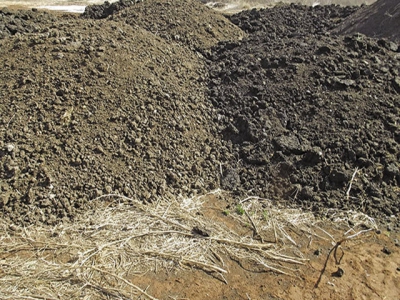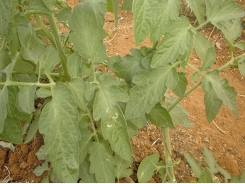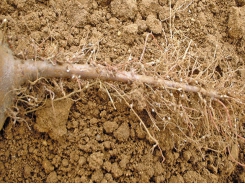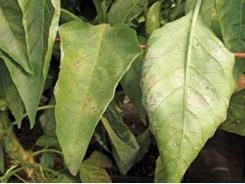Cations and percentages in a soil analysis

If this is not the case, you can convert the amount yourself. To better illustrate the process, let’s look at an actual analysis of a soil sample from one of my clients. The values are in mg/kg:
- Potassium (K) – 227
- Calcium (Ca) – 1 591
- Magnesium (Mg) – 375
- Sodium (Na) – 28
Each figure is then divided by the element’s atomic weight (see the table alongside).
With this calculation done for each element, the totals are added up. This amount (11,792) is then divided by each of the totals from the previous calculation. The new totals are then converted into percentages. (To check your calculations, add up the final percentages; the total should be 100, as shown.)
K is just about five, which is acceptable. If you have a similar figure and add a high quantity of cattle manure, which can sometimes contain up to 4% K, the percentage K in the soil may rise to much higher than this. Don’t be alarmed. When it reaches a high figure, the K leaches and the balance is restored.
I asked one of my clients why he had stopped using cattle manure. He replied that he was afraid of lifting his K value too high. As a result, he missed out on all the benefits of using manure. I showed my client a soil analysis of my own land taken after applying 50t/ ha manure. It was 12,83% K, which was far too high. I then showed him the analysis done by the same lab four years later; it indicated 5,38% K, which was just about where I wanted it.
Magnesium – high in SA soils
Our example shows Ca at 67%, which is spot-on (65% to 68% is considered optimal). At 27%, Mg is very high, but as mentioned previously, soils in South Africa tend to be high in Mg. The ideal is around 12% Mg, but few farmers can achieve this due to the nature of our soils.
One of the problems with a higher Mg level is that it can result in very compact soil that restricts root development and water penetration. This is because the Mg molecule is very small, so if there are enough of them they draw the clay platelets close together. In severe cases, this compact soil can result in anaerobic conditions, which harbour the wrong species of soil organisms.
Strangely enough, when the Mg level is very high, it is more likely for the crop to be Mg-deficient. As far as I am aware, nobody has yet worked out why this is so.
The Ca level can be increased to reduce the Mg, but this is not always necessary.
Increasing the humus content of the soil mitigates some of compaction caused by high Mg, and even fungus strands in the soil play a part. Increasing the humus content and, consequently, soil life helps to buffer the consequence of chemical imbalances.
When soils are high in Mg, the soil must be worked at the correct moisture content.
Sodium
The percentage Na in this sample is low but adequate. It should be kept below 4% – and 2% is considered ideal. When the Na level is very high, the soil pH usually increases to above eight and the structure becomes damaged and crusty.
The answer in this case is to use gypsum. It has a neutral charge, being sulphur bound to Ca, so it can move freely in the soil solution to wherever Na is attached to soil colloids. When the Ca replaces the Na, the latter leaches through the soil profile as sodium sulphate (Na2SO4).
It is useful to know the approximate percentages of soil cations to understand soil better and modify the ratios accordingly.
Related news
Tools

Phối trộn thức ăn chăn nuôi

Pha dung dịch thủy canh

Định mức cho tôm ăn

Phối trộn phân bón NPK

Xác định tỷ lệ tôm sống

Chuyển đổi đơn vị phân bón

Xác định công suất sục khí

Chuyển đổi đơn vị tôm

Tính diện tích nhà kính

Tính thể tích ao




 Humus – learn to appreciate it
Humus – learn to appreciate it  More on controlling powdery mildew in peppers
More on controlling powdery mildew in peppers